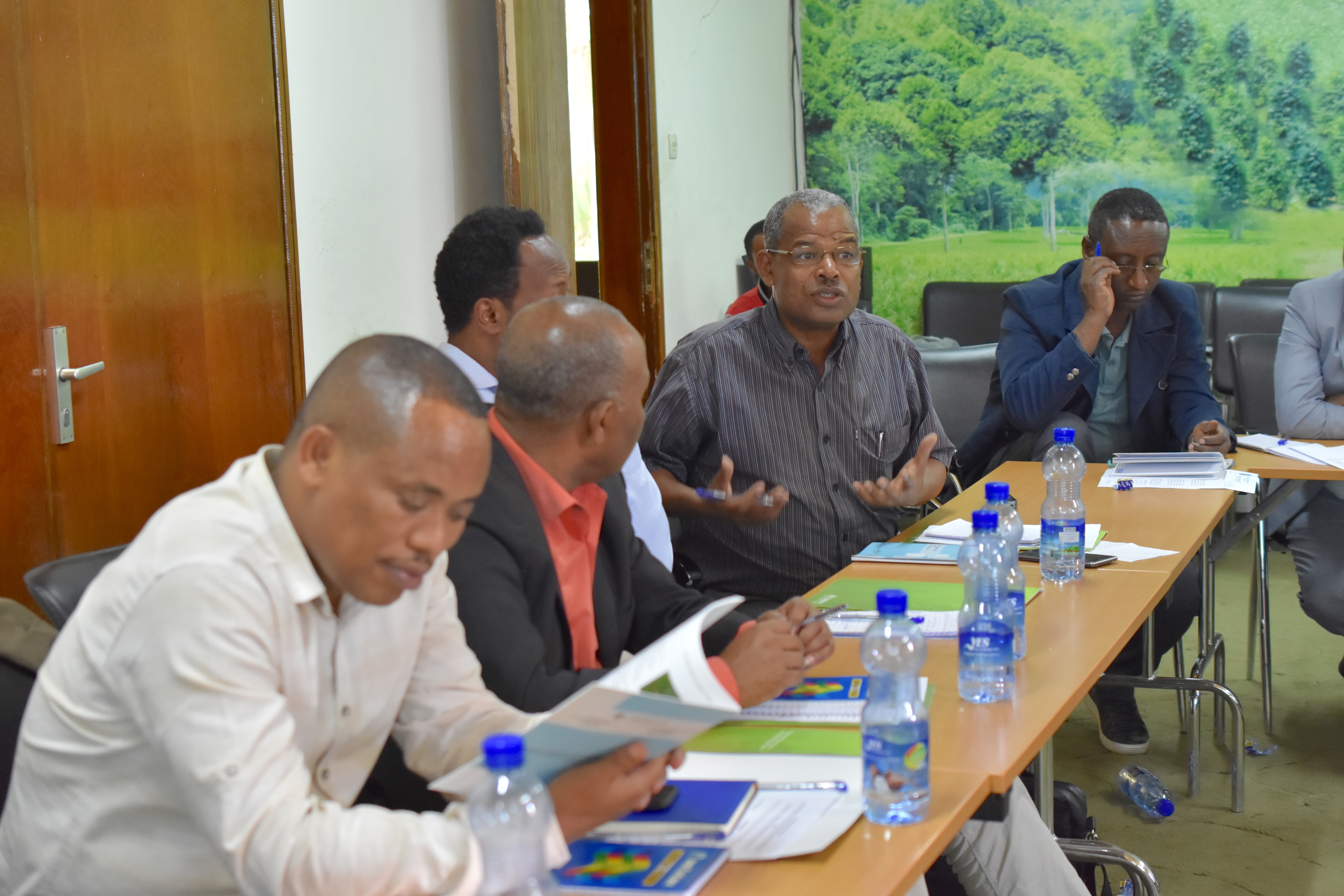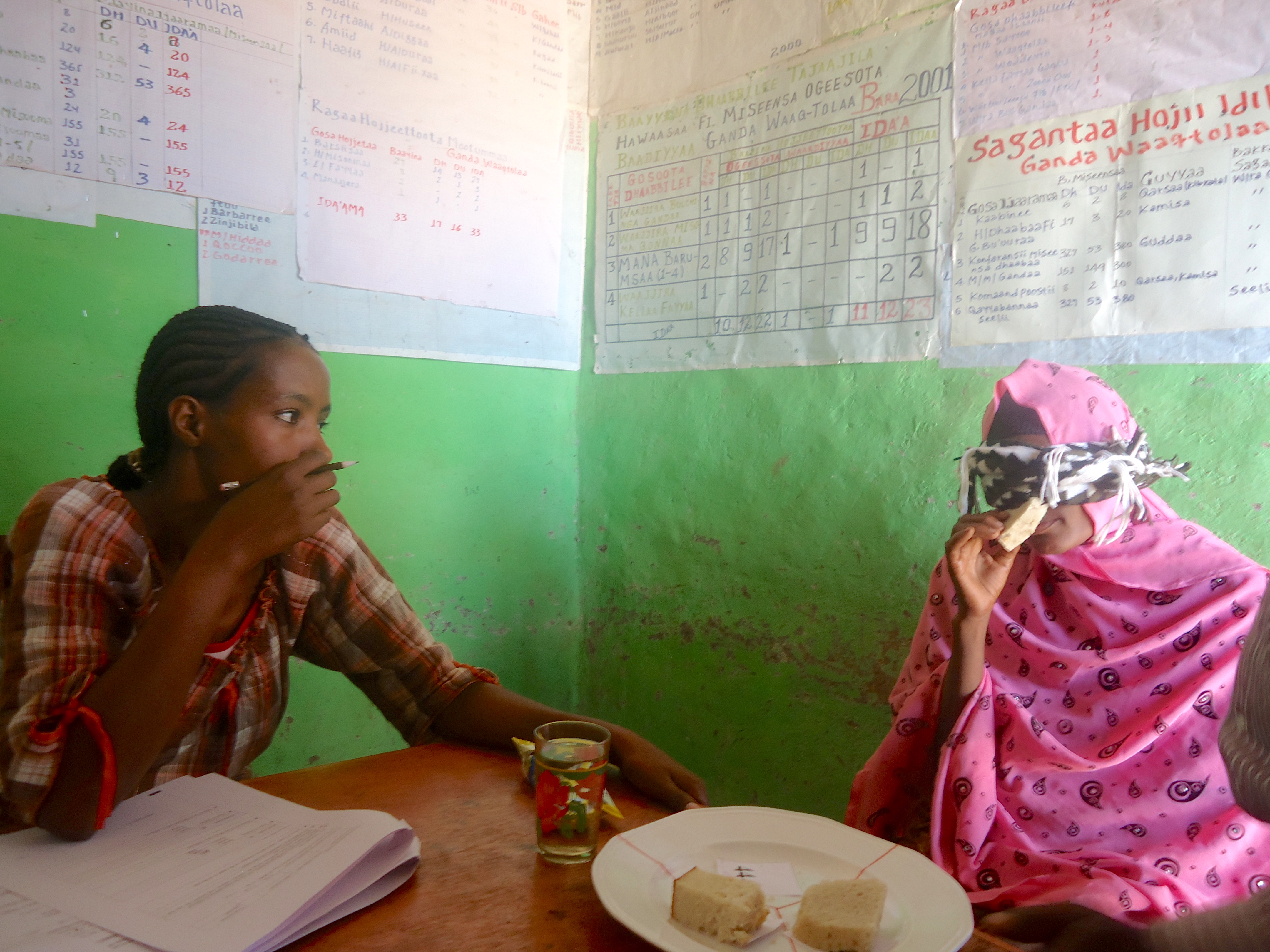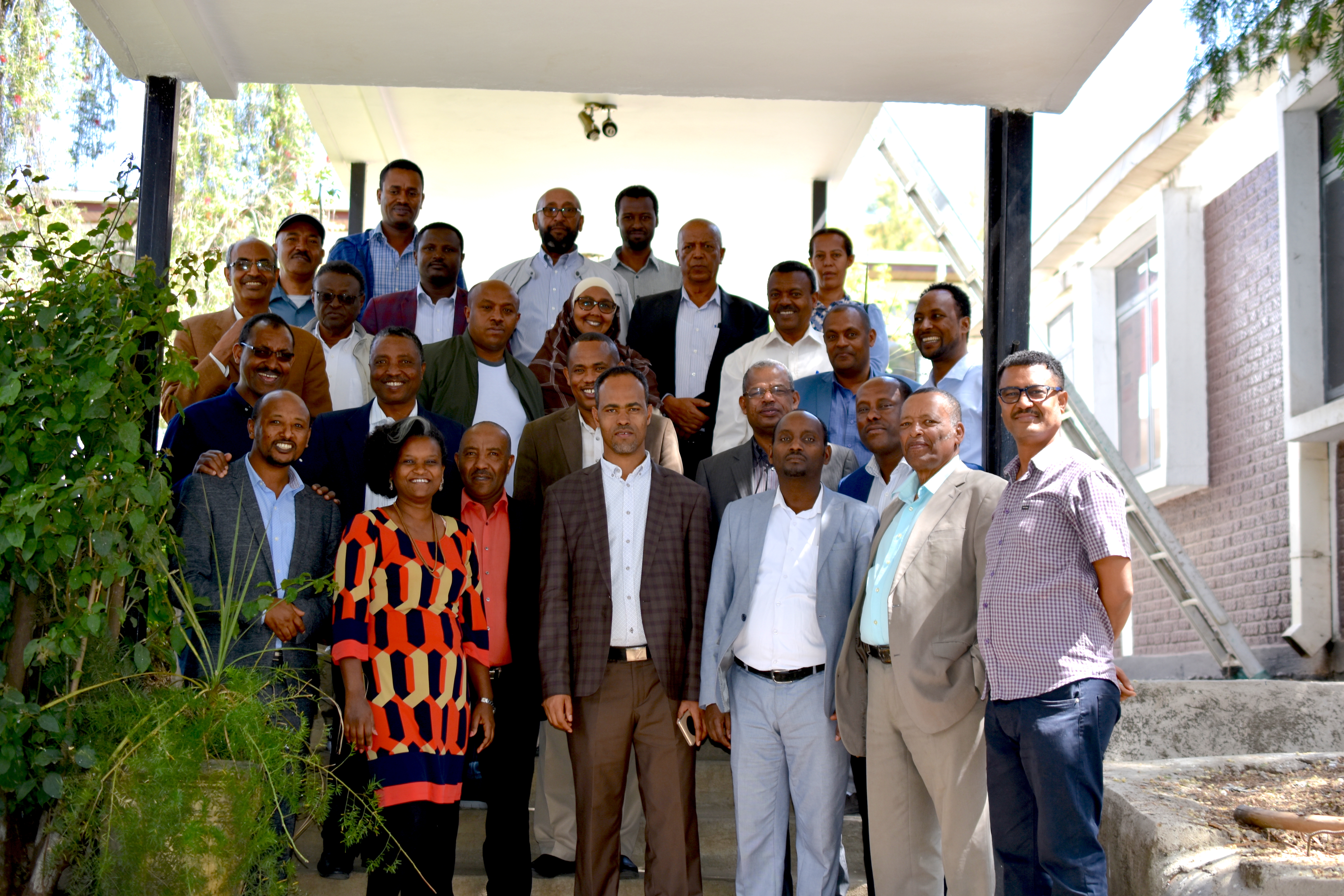The International Maize and Wheat Improvement Center (CIMMYT) and Ethiopia’s Ministry of Agriculture held a workshop on March 23, 2019, with the main stakeholders of the agricultural research and seed sectors to discuss how Quality Protein Maize (QPM) production and demand could be expanded, to ensure lasting nutrition benefits for consumers and incomes for farmers.
Maize is the second most cultivated cereal in Ethiopia, with 66% of cereal-farming households cultivating maize on 2.1 million hectares. It is a primary staple food in the major maize-growing areas as well as a source of feed for animals and a raw material for industries. With increasing pressures from climate change and population growth, maize is likely to be key to meeting the challenges of food and income security.
Despite its high productivity, maize grain does not provide balanced protein for human consumption. It is deficient in two essential amino acids, lysine and tryptophan, putting those who consume maize without alternative protein sources at risk of malnutrition and stunted growth and development. Infants and young children are especially at risk. Complementary and alternative sources of protein such as legumes or animal products — meat, eggs and milk – are often inaccessible or unaffordable to the poorest households.
QPM is a type of maize, developed through conventional breeding, that contains nearly twice the amount of tryptophan and lysine compared to common varieties. Research shows that eating QPM can improve quality protein intake among young children and QPM is nutritionally advantageous over conventional maize, especially for families with an undiversified diet dominated by maize.
Since 2012, CIMMYT has been working with the Ethiopian Institute of Agricultural Research (EIAR), the Ministry of Agriculture and other strategic partners like the Ethiopian Public Health Institute (EPHI), Sasakawa Global 2000 (SG2000) and Farm Radio International, to improve food and nutritional security in Ethiopian farming communities through the promotion and expansion of QPM under the Nutritious Maize for Ethiopia (NuME) project. This project built on the achievements of a previous project called Quality Protein Maize Development (QPMD). Both projects were financed by the government of Canada.

Ethiopians are willing to pay for QPM
During the workshop, CIMMYT senior scientist and NuME project leader Adefris Teklewold talked about the favorable conditions that had contributed to the project’s success and which are also grounds for sustainability: government policies and strategies, technical knowledge and technology, and the productive collaboration among partners.
The NuME project operated in 36 woredas, or districts, of the Amhara, Oromia, SNNP and Tigray regions. More than 68% of the target population is now aware of the nutritional benefits of QPM, boosting the demand for the nutritious maize.
Four QPM varieties have been released since the beginning of the project and at least two promising varieties are in the pipeline. Figures show an adoption rate of 11% in the project’s target areas. Today, the main issue to reach out more people is shortage of seed.
Consumers are willing to pay up to 15-20% more for QPM grain compared to non-QPM maize, which can encourage farmers, seed suppliers and other stakeholders to invest on QPM.
The project team trained people in food preparation and organized events to demonstrate the benefits of QPM. One fifth of the 1,788 QPM demonstrations were managed entirely by women. Through demonstrations and blind tastings, people could check that QPM maize did not affect the taste or functional properties of traditional foods like dabo bread or injera flatbread. For instance, they realized that injera using QPM also stayed moist and could be rolled easily. In addition, a recent study on school feeding revealed that dishes made from QPM received wider acceptance.

Beyond the NuME project
Germame Garuma, Director General of Extension at the Ministry of Agriculture, said that “QPM is an important solution to help us improve the nutrition situation in the country.” The Ethiopian government now aims to ensure 10% of the total maize growing area is planted with QPM. Ethiopia has included QPM as a key intervention in national strategies and programs, such as the Agriculture Growth Program-II and the Seqota Declaration.
Garuma called on all government offices at various levels and NGOs working in the agriculture and nutrition sector to continue the promotion of QPM. Workshop participants drew a roadmap with four focus areas: overall coordination, dissemination, technology generation and seed production. With the leadership of the Ministry of Agriculture, more families will be able to improve their diet with QPM in the future.
Dagmo Nour, Project Manager at Global Affairs Canada, expressed interest in engaging further with CIMMYT and its partners to ensure the sustainability and scaling of QPM efforts by addressing critical issues with Ethiopian seed systems.


 Nutrition, health and food security
Nutrition, health and food security 
